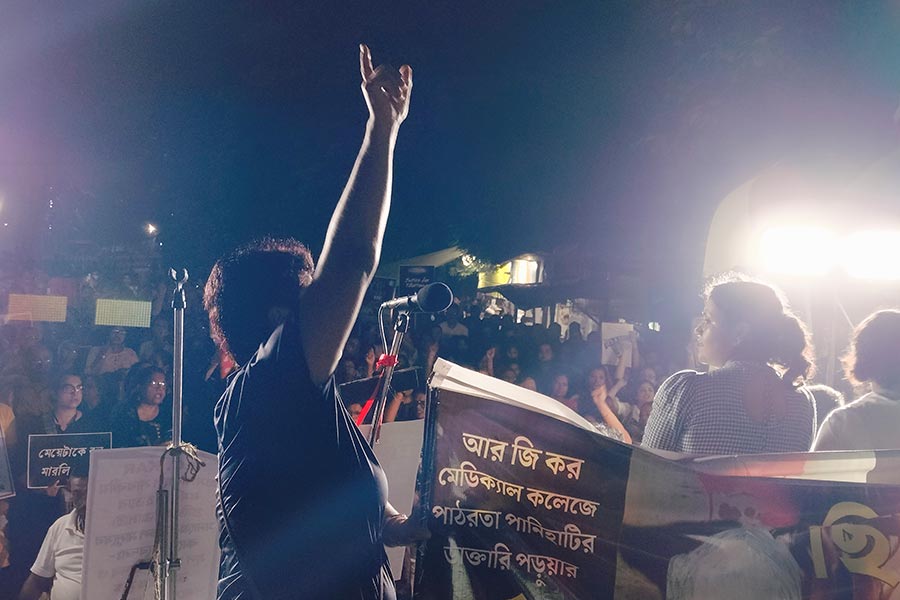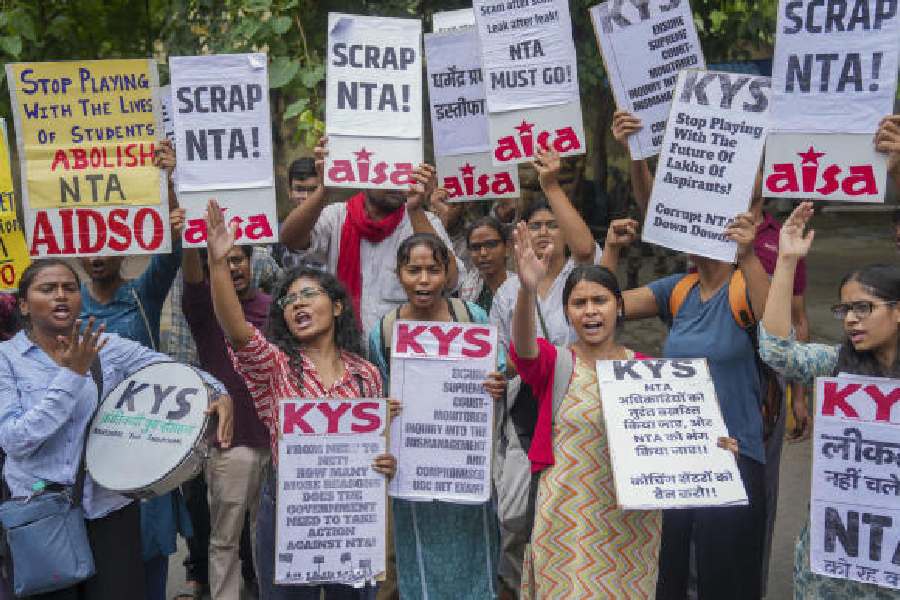An artist, perhaps from a neo-Bengal School, may be inclined to take the paintbrush to capture the present, vibrant scenes of streets full of protesting people on both sides of Bengal at some point in the future. For the streets are, indeed, on fire. In Bangladesh, people marched on the streets to topple a regime. In West Bengal, the streets are thundering with the vox populi as people from all walks of life descend upon them, night and day, demanding justice for the woman victim of a heinous crime. Art has, over the centuries, responded enthusiastically to capture the fervour of defiant, revolutionary times. And what has often been common to the iconography of turbulent hours are milling crowds in public squares and streets.
A cursory glance at some of the great paintings in this genre would bear out this
hypothesis. Consider Eugène Delacroix’s work titled Liberty Leading the People. Commemorating a popular insurrection that led to the dismantling of a royal regime in 1830, the artwork envisions liberty in the feminine form in a public space leading the people to liberation. An agitated crowd is present in another famous painting of revolution — The Petrograd Madonna by the Russian artist, Kuzma Petrov-Vodkin, which celebrates the October Revolution as an occasion of spiritual replenishment. Closer home, among other works, we have Beohar Rammanohar Sinha’s mural depicting the Quit India movement; here too, the people on the street lead the way. The convergences in these artistic productions portraying seismic events separated by time and space can only be explained by the fact that art and life often overlap in intriguing ways. Indeed, the hour of social and political ferment across countries in the modern era — be it in Bangladesh, Sri Lanka, Afghanistan, the Arab Spring in recent times or, going back further, Iran, Vietnam, Cuba and so on — cannot be imagined sans streets that have been reclaimed by the people. In fact, there is even a case to argue that the contemporary visual montage of the ongoing protests — even though the paint brush has given way to television feed and mobile phone cameras — ought to be looked at as the continuum of an artistic tradition that strives to preserve for posterity a document of restive times.
But the crowd is a fickle-minded entity. It can, in the wink of an eye, transform itself from heroic revolutionaries to the ogre that is the mob. Thus, the vandals who ransacked a Calcutta hospital, the site of the crime that the city is protesting vociferously against, or the weapon-wielding, disorderly multitudes hunting members of minority communities in Bangladesh, can, by no means, be deemed revolutionaries. What is necessary is to identify and punish these unruly agents so that the line separating a valorous crowd from an unruly mob remains distinguishable. Perhaps the works of art, great and small, public or personal, would become a handy tool in the hands of future chroniclers as they go about sifting the heroes of the time from its villains.










